Incorporating a rain garden into our homestead allows us to weave natural processes into our backyard. We can still grow lots of food, keep chickens and bees – all the fun homestead-y stuff – but we can also devote a little space to help protect our urban watershed.
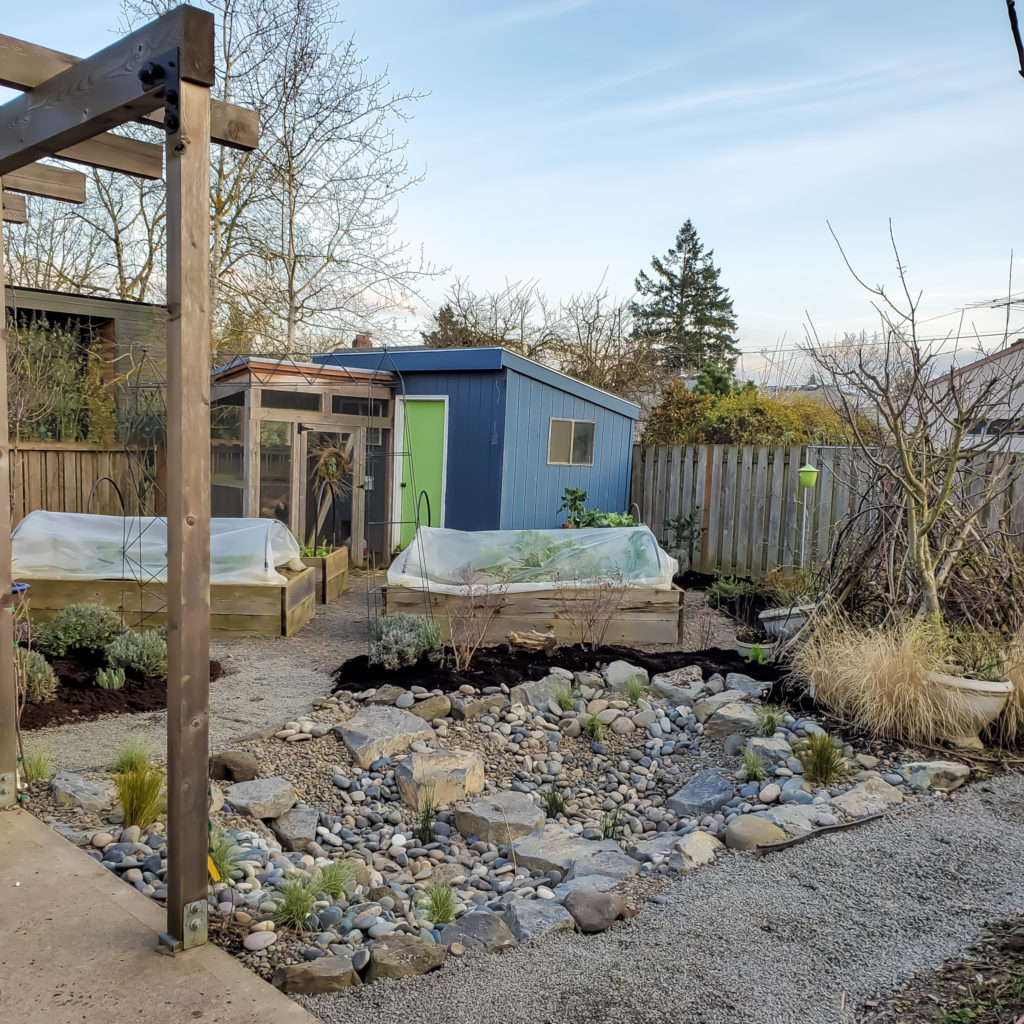
Portland receives a lot of rain for nine months of the year and downspouts connected to the sewer can cause backflow into the river during major rain events – gross. The city encourages homeowners to disconnect their downspouts from the sewer, so rain can soak back into the ground naturally. Rain gardens are a great way to divert all that stormwater away from structures – like your house.
A rain garden can also be beautiful landscape feature and fun space for kids to explore. I designed ours to have lots of big boulders, a stone “bridge” for the kids to use, and natural rocks in various sizes. The kids love searching for cool rocks and are already using the smaller rock areas for “construction sites” with their toys.
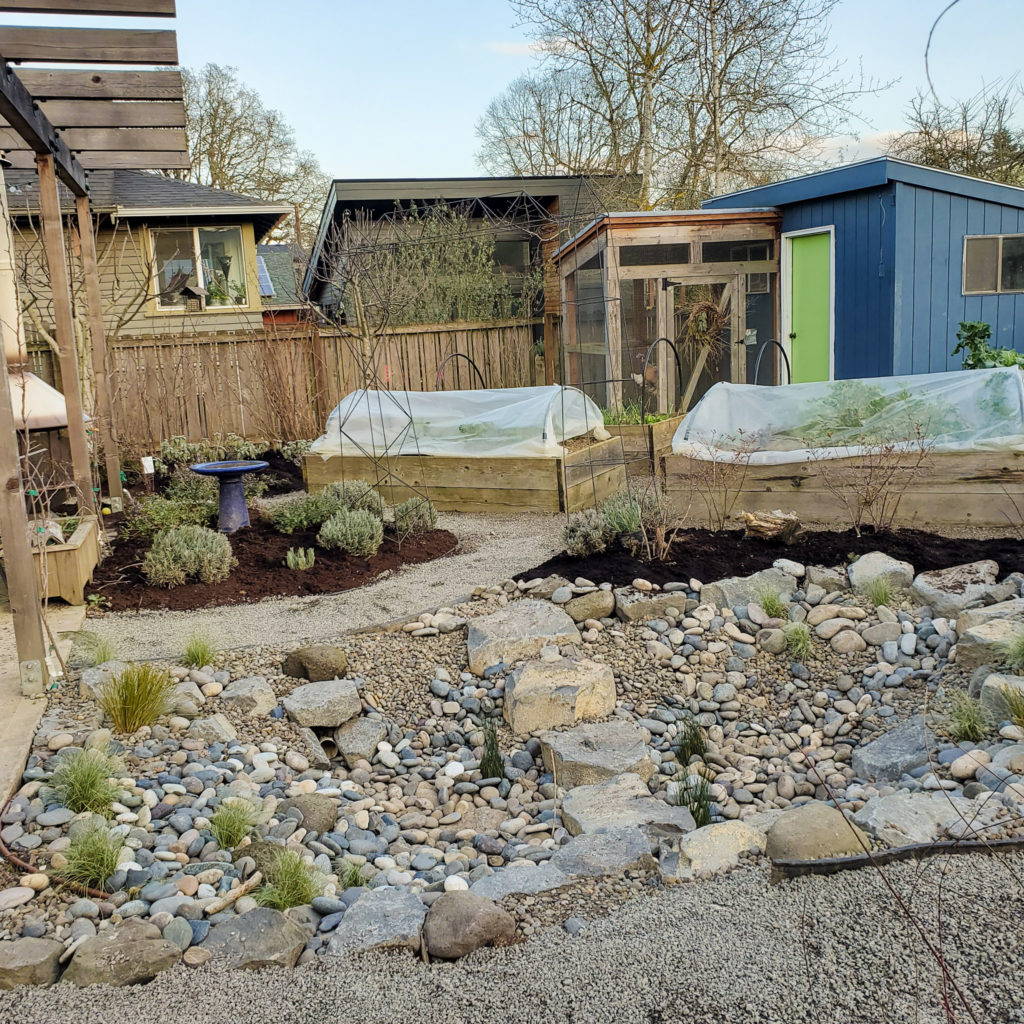
If you plan to build your own rain garden, you can learn everything you need to know from a couple helpful documents. The City of Portland has one called How to Build a Rain Garden. And Washington State created the other called Rain Garden Handbook for Western Washington.
I’ve worked as a landscape designer with Northwest Native Landscapes for years now, and we’ve designed tons of really pretty rain gardens. My DIY version wouldn’t look as nice as I wanted, so I called them for a pro build. We talked through the vision, I shared my design plan and a rough sketch, and they got to work.
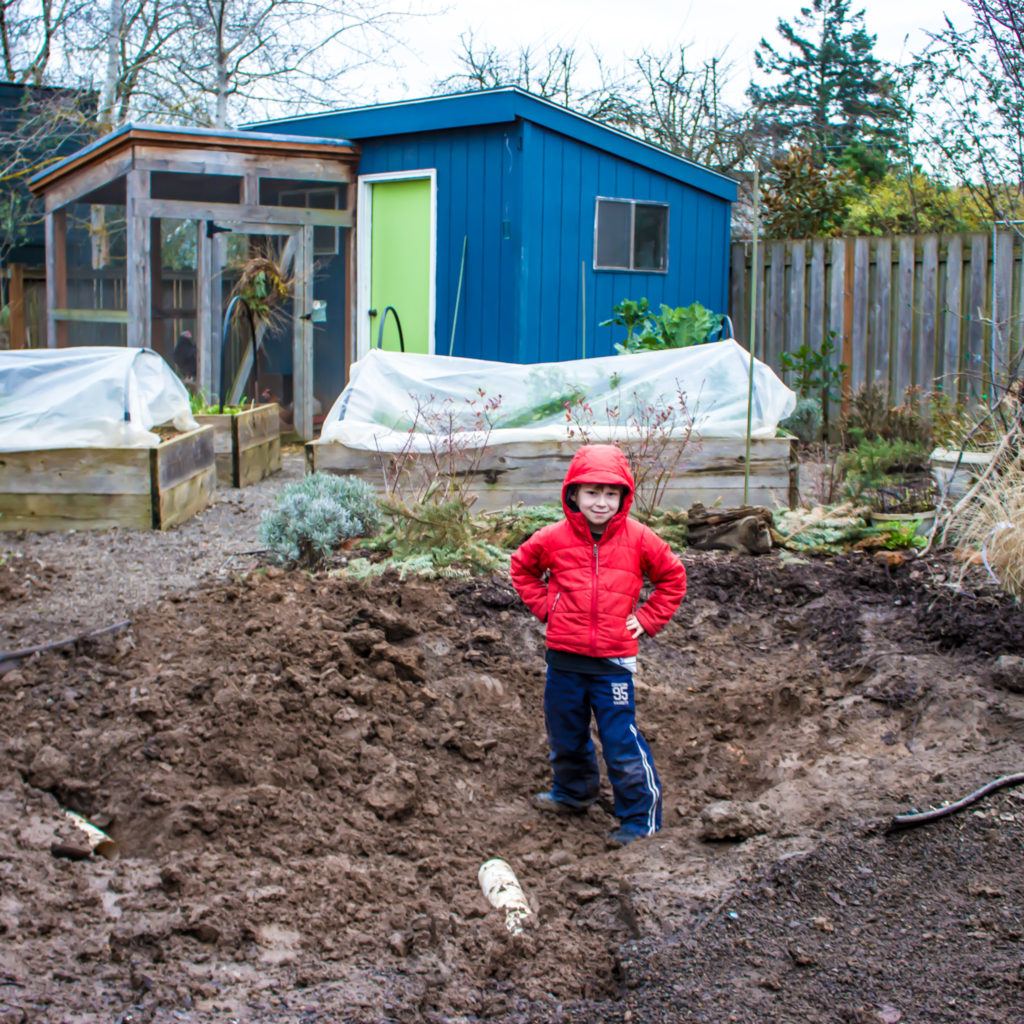
Excavation went QUICK! It’s jarring to see a massive hole in your garden-baby, but I knew it would get better. They connected our downspouts to huge pipes, trenched and buried them, and perfectly sloped them into the rain garden. You can just barely see the white pipes enter the basin where River is standing, in the photo above.
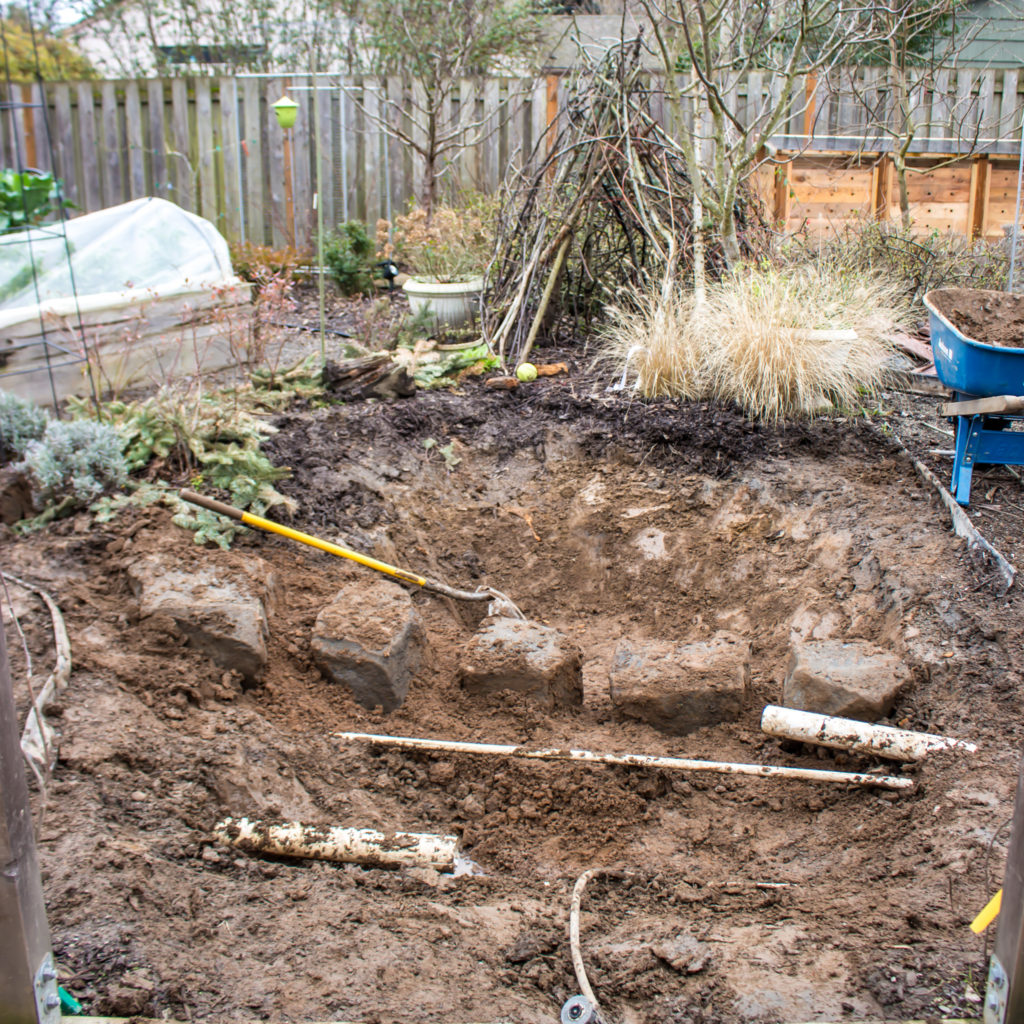
When the big boulders arrived I was gleeful. Every garden needs some big boulders and our local basalt stone is gorgeous. The bridge was set into place first. Additional boulders were added around the perimeter. Once the boulders were in, river rock was brought in to finish things off.
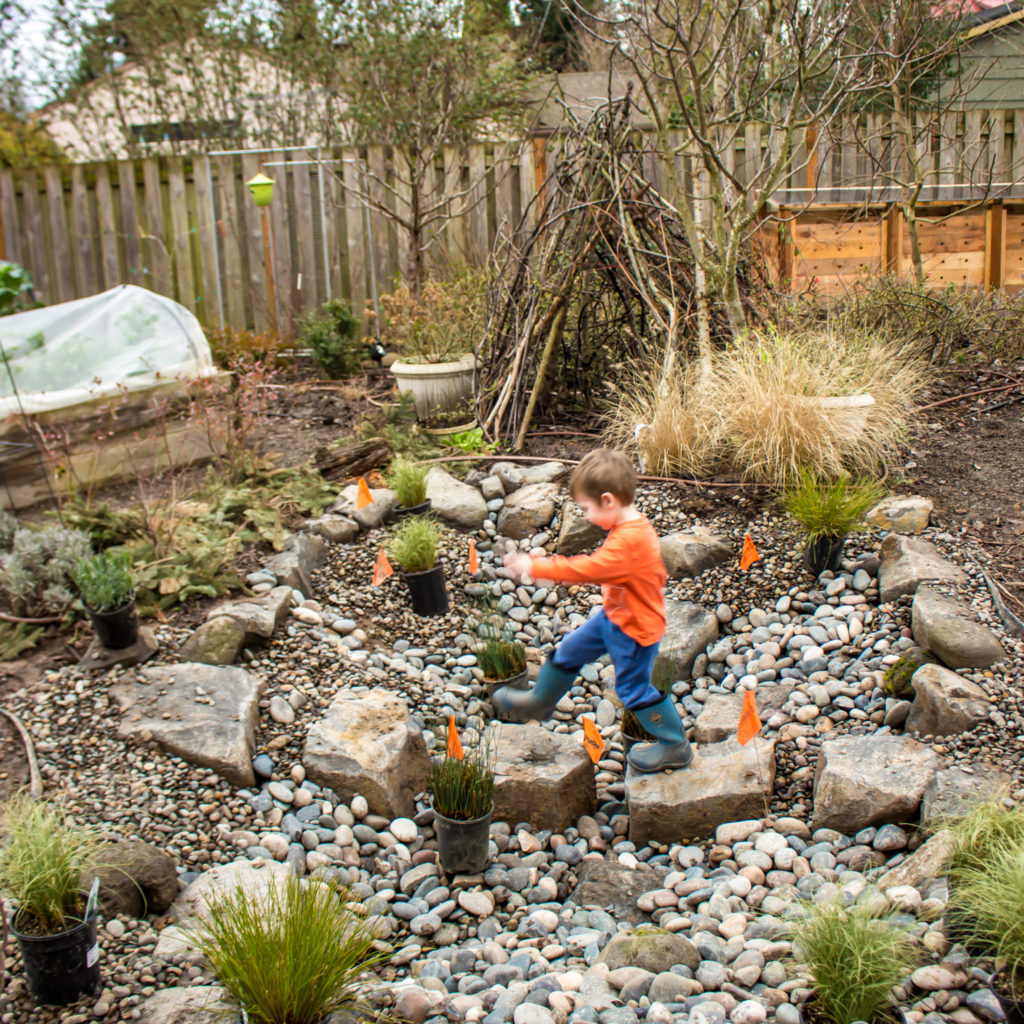
I like rain gardens that include a few plants – not too many that it feels cluttered, but just enough to contrast the rock with soft foliage. I chose the following plants for their water tolerance, evergreen foliage, and varying colors and textures:
- Spreading Blue Rush (Juncus patens)
- Orange New Zealand Sedge (Carex testacea)
- Frosty Curls Sedge (Carex comans ‘Frosty Curls’)
It will be rare to see standing water in the rain garden, as the water soaks pretty quickly back into the earth. But I am watching the weather forecast closer than ever before, eagerly awaiting the next massive storm. You’ll have to follow me on Instagram to see if there are updates over time.
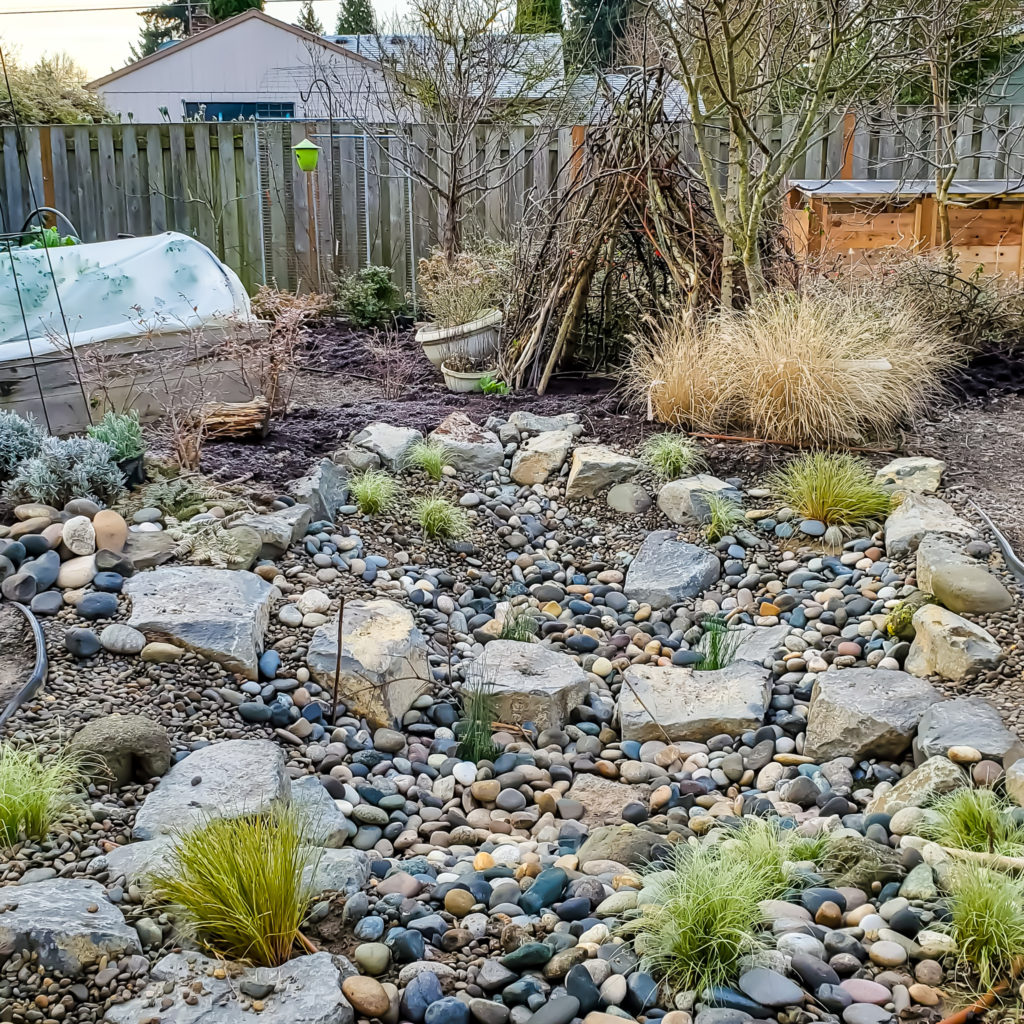
Do you have stormwater issues? Have you built your own rain garden? I love reading your comments, so don’t be shy about sharing or just saying hello.
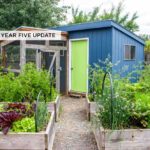



 Upgrade your hanging basket game!
Upgrade your hanging basket game!  Here’s
Here’s

 This cluster was about the siz
This cluster was about the siz




 I start with a
I start with a
